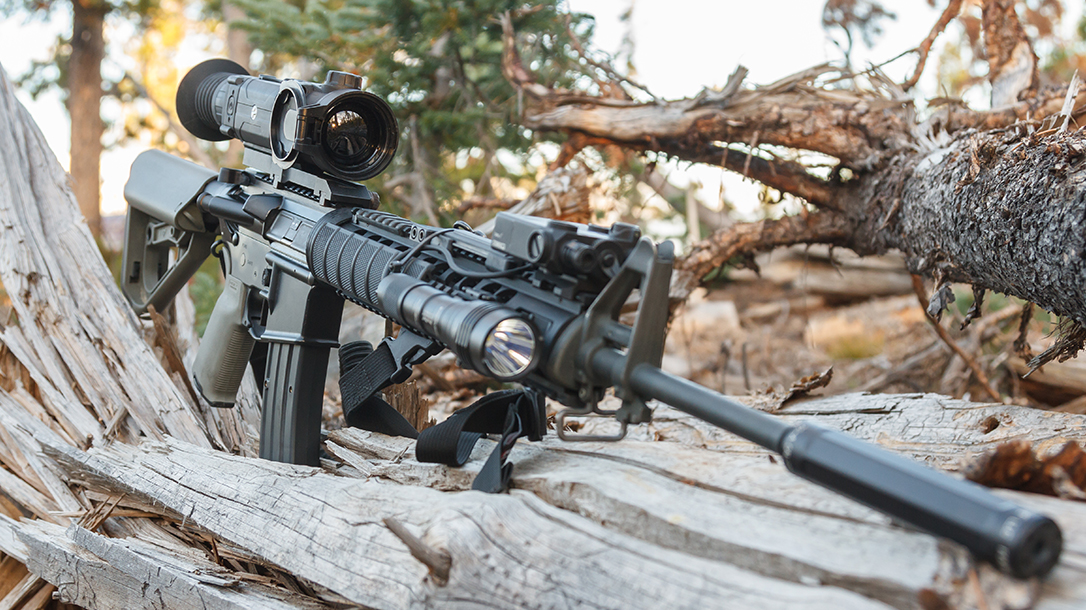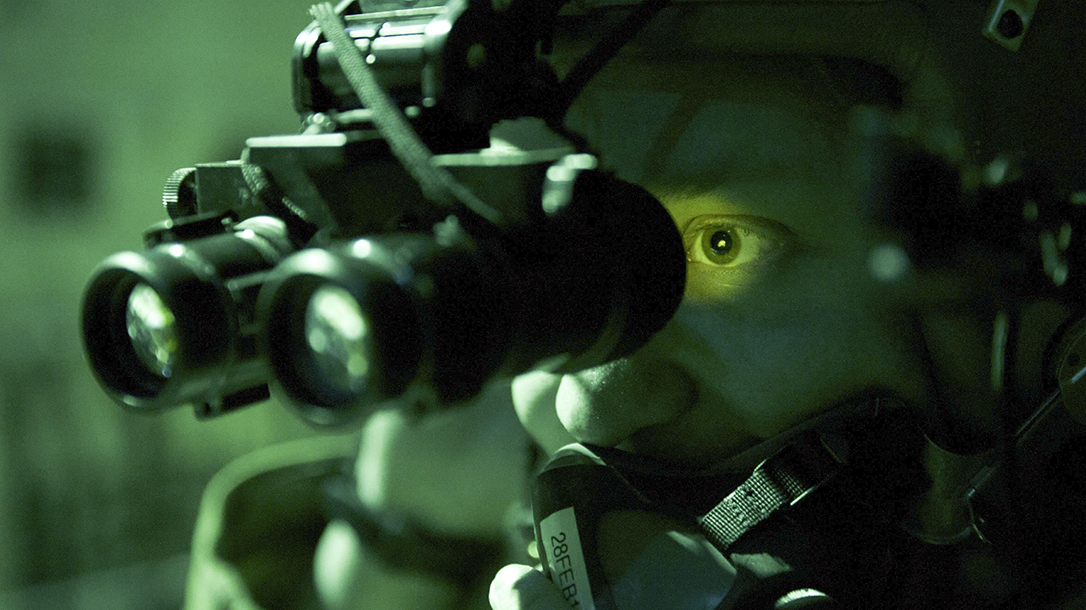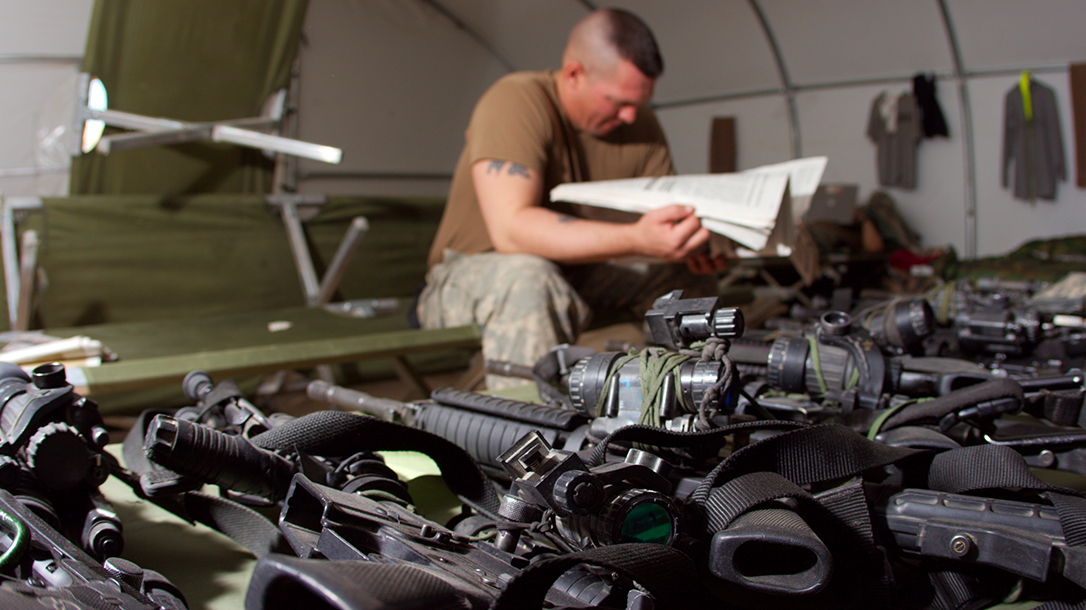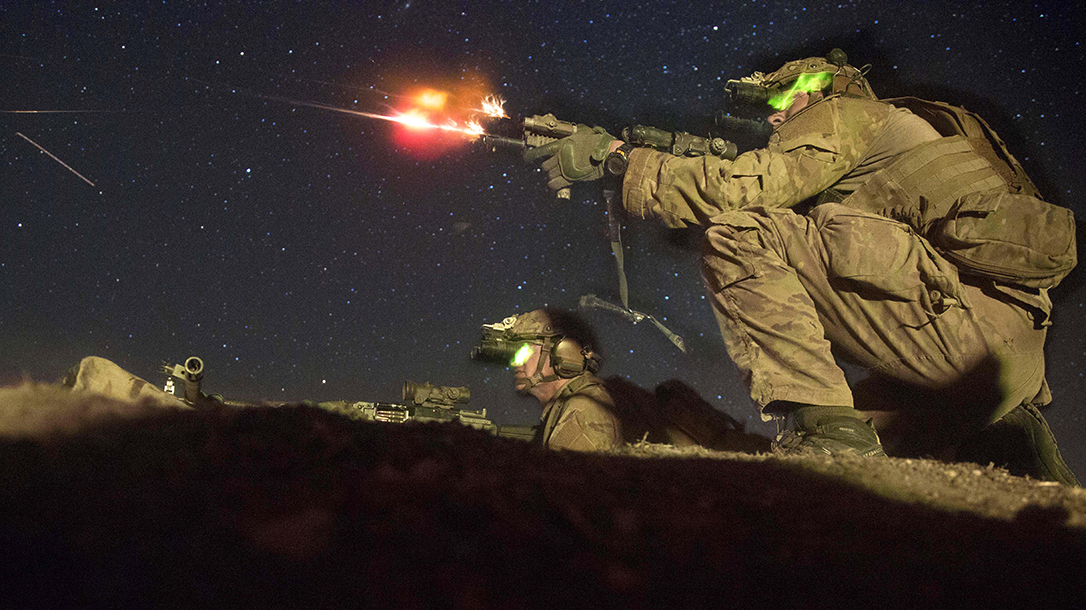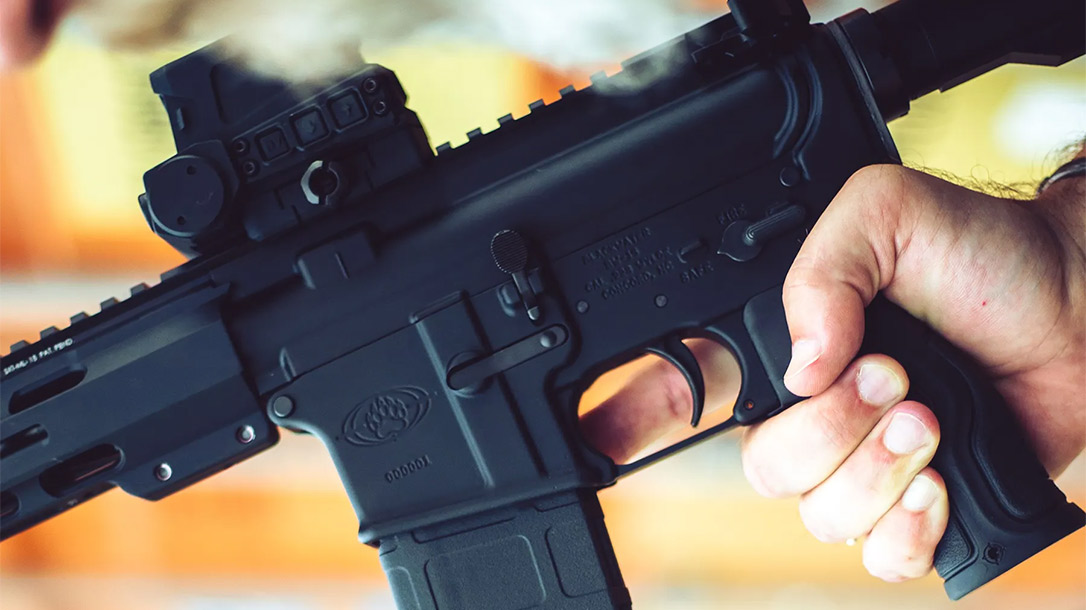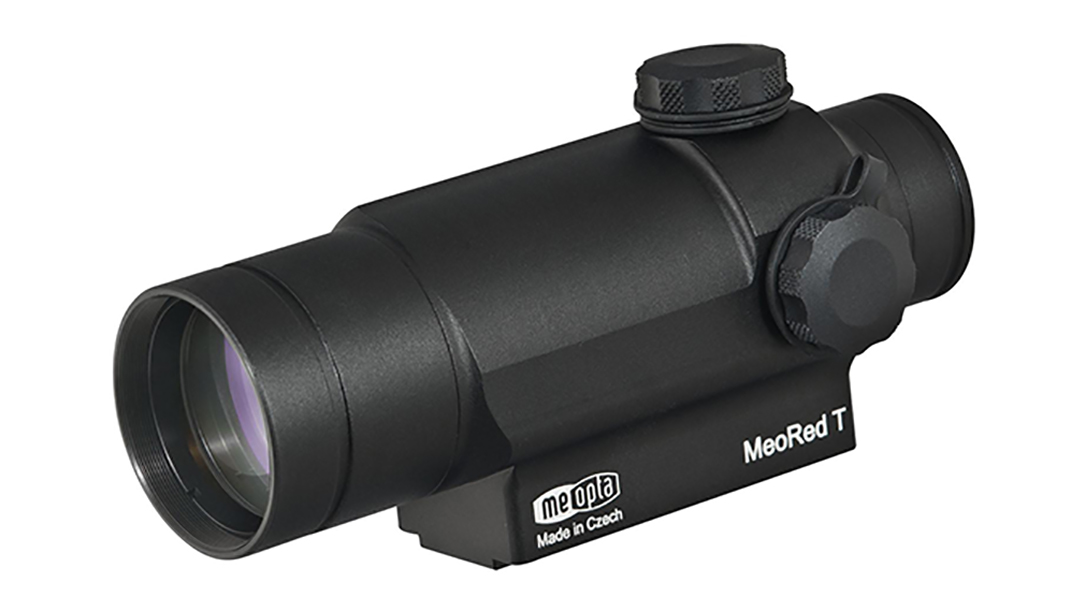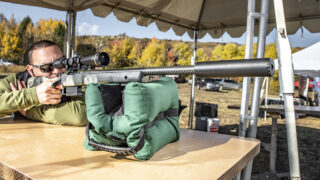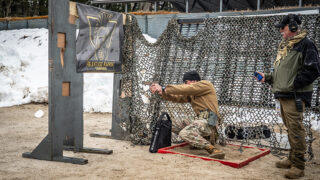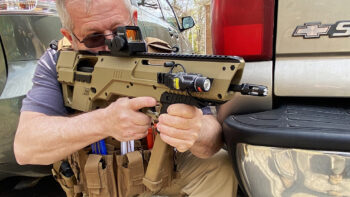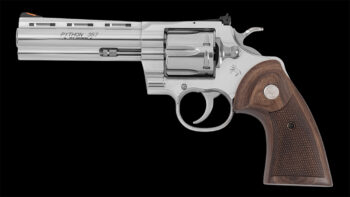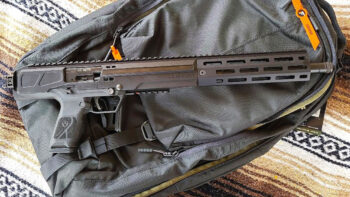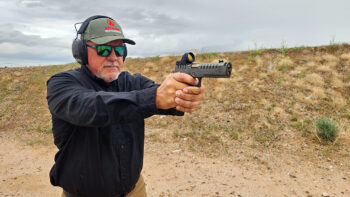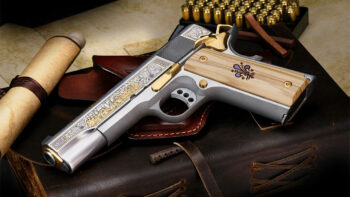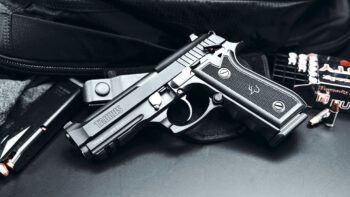Entering the world of low-light endeavors can be daunting on many levels. One of the earliest challenges that new shooters encounter is the selection of their first night-vision device (NVD). The idea that you can simply buy a night-vision scope and perform every shooting task at night that you normally perform during the day soon evaporates with a little research, knowledge and experience.
So how does a new shooter determine what type of NVD to start with? Applications and budget determine the need. Keep in mind that there is some crossover. While one type of device may be best for a certain task, it may be acceptable, even with some limitations, for other tasks. Typically, once the stealth bug bites, we end up with multiple devices that are used together or enlisted for specific tasks as needed.
Owning The Night
What most people think of when the term “night vision” comes up is the green-image view from an image-intensified device like the PVS-14 or the older PVS-7. Hollywood has shown this view in movies for decades, and news broadcasts shown during the invasion of Iraq and many other military conflicts show a green, pixelated image of a darkened city with ribbons of anti-aircraft fire heading into the clouds in search of American bombers. This perception is not without merit. At this point, most U.S. service members engaged in direct ground combat are issued an image-intensifying night observation device (NOD). These image intensifier devices have reached the point of being almost ubiquitous.
Image Intensifier NODs
As their name suggests, image-intensifying NODs strengthen available light and present whatever the device “sees” before it. There is no through-the-scope view of the actual object you’re observing like there is through a riflescope or binoculars. Instead, a screen essentially plays a life feed from the NOD.
Of course, to intensify light, there must first be light. If you close yourself inside a completely sealed room with no illumination source whatsoever, you will see only a murky black image with an image-intensifying device. Add even the smallest amount of illumination and your device will start to present a visible image. As available light increases, the image shown to the wearer becomes clearer and brighter. When an NOD receives too much light, it may be damaged, unless the unit features a control mechanism or “gate” to protect the image intensifier (the heart of the device) within.
Infrared
In addition to intensifying visible light like moonlight, streetlights or other forms of illumination that the human eye can see unaided, an NOD can see light in the infrared spectrum as well. Since infrared light is not normally visible to the human eye, this presents an opportunity for those with NODs to illuminate darkened areas without revealing themselves and their activities to an opponent who does not have night-vision technology.
With the aid of infrared light, a shooter equipped with an NOD can function on even the darkest of nights far from the spill of urban glow. Of course, if your adversary is equipped with an NOD, then he will also be able to see the infrared light just as well as you. For this reason, active infrared illumination is kept to a minimum when such a threat exists. As a note, most home security cameras feature a version of image-intensifying technology and will have multiple infrared illuminators.
Thermal Imaging
Though most of us think of an image-intensifying device when we hear the term “night vision,” there is another type of technology that fits within the category as well. Thermal-imaging devices (thermals) rely on the heat generated by objects instead of the light reflected by those same objects. This is a huge distinction and has a host of advantages and disadvantages. Anyone who has seen the movie Predator has seen a depiction of what thermal imaging looks like to the shooter. The thermal detects the intensity of an object’s heat and translates that into a shaded image that is presented to the viewer. As with an image-intensifying device, there is no through-the-scope view with a thermal. You’re viewing a screen that’s showing a translated representation of the heat signatures detected by the thermal.
In addition to the two main types of night-vision technology, there are multiple applications, or form factors, of each. Monoculars and binoculars feature attachments for a helmet. Dedicated riflescopes are also available in thermal and image-intensifying configuration. A dedicated scope eliminates a day scope mounted on the firearm. This has advantages and disadvantages. An alternative is the “clip-on” NVD that mounts in front of a standard day scope. The clip-on has no reticle but presents an image to the objective lens of the day scope. The reticle and all adjustments are inherent within the day scope. Finally, there are handheld devices with neither reticle nor mounting system. These would be similar to binoculars or monoculars used for viewing during daylight.
Image Intensifier and Thermal Strengths and Weaknesses
So do you need an image-intensifying device or a thermal? The short answer is yes, and here’s why: image intensifying is best for navigation or tasks where details must be discernible, and thermal is best for locating warm things like wild boars across a field or a trespasser in the woods. You can certainly locate hogs with an image-intensifying device, but your range and detection capabilities will be noticeably less, especially on dark nights without much ambient lighting.
You can navigate in some cases with only a thermal device, but you’ll have difficulty in others. Similar vegetation tends to take on a monotone look in a thermal. This vegetation can easily hide obstacles within, and things on the ground can trip you or impede your movement. Thermals can’t see shadows or reflections, but an image-intensifying device can see both. Image-intensifying devices also perform similarly in varying atmospheric conditions. Thermals perform poorly when the temperature and humidity are high. At the same time, thermals can see warm objects through smoke, but an image-intensifying device cannot.
Thermals can’t see infrared light, and therefore can’t detect an infrared laser or illuminator. With an image intensifier, teammates can point out targets or signal each other with infrared lasers. Image-intensifying NODs can see through glass, assuming there’s adequate lighting beyond that glass, while thermals cannot. As I said, you may need both.
Image Intensifier & Thermal Power Combos
Since most image-intensifying devices are used for navigation, they are generally worn mounted in front of the shooter’s eye. The most common mounting system combines a helmet-borne shroud, mount and swingarm that allows the NOD to be installed and removed from the helmet quickly, and to be flipped up and out of view when not in use. A typical execution of this would involve a SWAT team navigating from their last covered and concealed position to the target site using their helmet-mounted NODs, then flipping up their NODs before making entry into the structure with visible light. Another example is a hog hunter navigating along an old logging road using his image-intensifying NOD. One flips it up so that he can get his eye behind his weapon-mounted thermal riflescope to search for hogs beyond the brush as he nears the recently planted peanut field.
After years of using image-intensifying and thermal-imaging devices for both professional and recreational purposes against both man and beast, here are the configurations that I believe offer the best combination of capabilities. For the tactical shooter, a helmet-mounted NOD like the PVS-14 or, better yet, a binocular NVD like the Sentinel is used for navigation purposes. An image-intensifying device calls for a weapon-mounted infrared laser to be used for aiming and signaling. For target detection, a handheld thermal monocular provides an additional capability that can’t be overemphasized. Detecting targets is simply easier, quicker and more certain with a thermal in many circumstances.
In the Field
For pre-mission reconnaissance, team members should be equipped with both image-intensifying and thermal devices that are designed for longer-range target identification. This may include a clip-on image-intensifying optic in front of the marksman’s magnified day scope and a thermal scope either mounted on a rifle or simply mounted on a tripod as an observation and detection tool. It is worth noting that most thermal scopes have the built-in capability of recording video and taking pictures. These can obviously be used as part of a briefing to mission planners and team members.
For the nocturnal hunter, I’d similarly suggest a helmet-mounted or binocular NOD for navigation purposes. For target detection and as the primary engagement tool, a rifle-mounted thermal scope can’t be beat. I recommend cause, of course, when using any weapon-mounted optic to detect targets. If your budget allows, a handheld thermal monocular mitigates this safety issue completely. Finally, I’d also suggest a weapon-mounted infrared laser.
When things go perfectly and you’re able to get within extremely close range of that big sounder of hogs, the added field of view of an unmagnified helmet-mounted NOD, combined with the quick-aiming capability of an infrared laser, is absolutely devastating. As the hogs flee beyond the range of the evening’s illumination, you can quickly flip up that NOD and resume work with the thermal scope. This combination has proven unbeatable. So, whatever your individual needs happen to be, there is a night-vision solution for you.
This article is from the 2019 issue of Stealth magazine. Grab your copy at OutdoorGroupStore.com.












